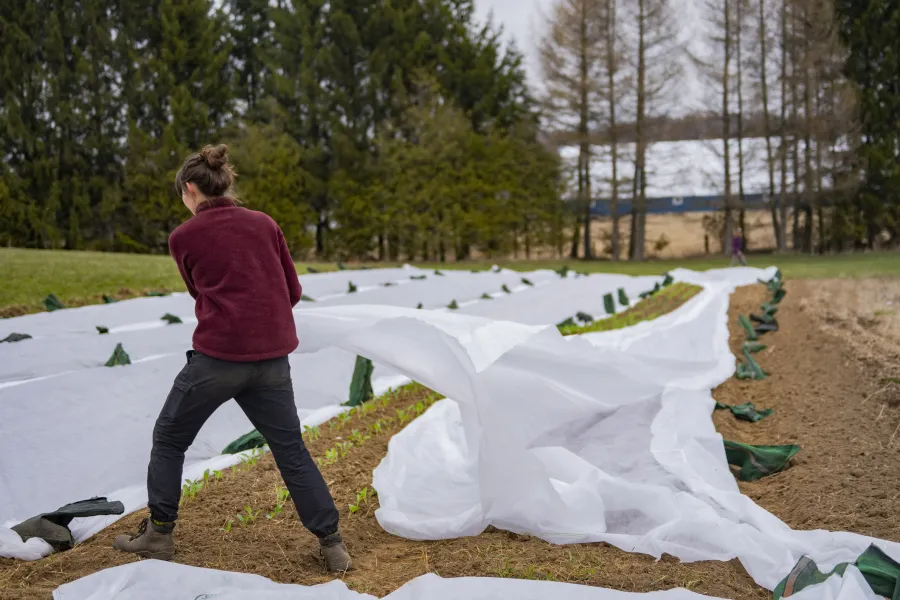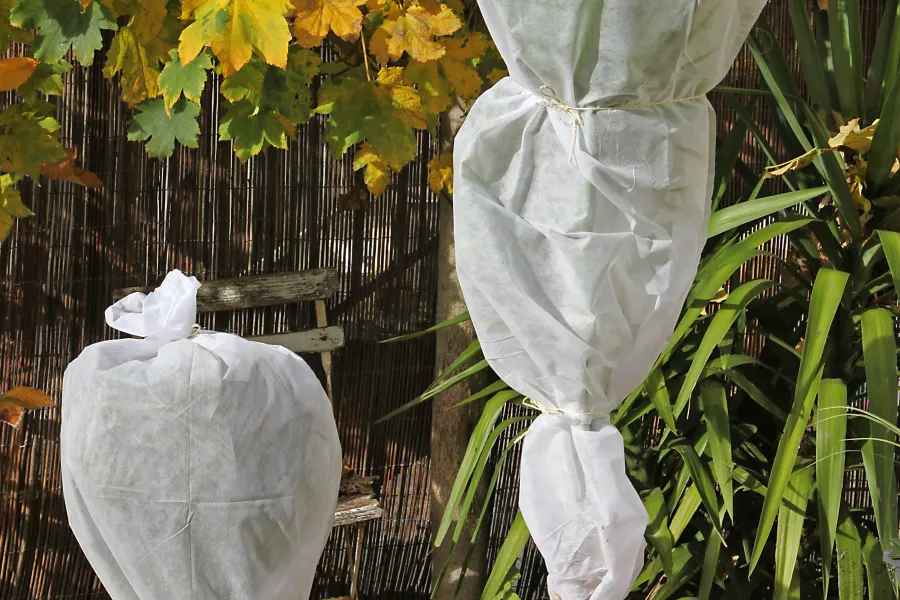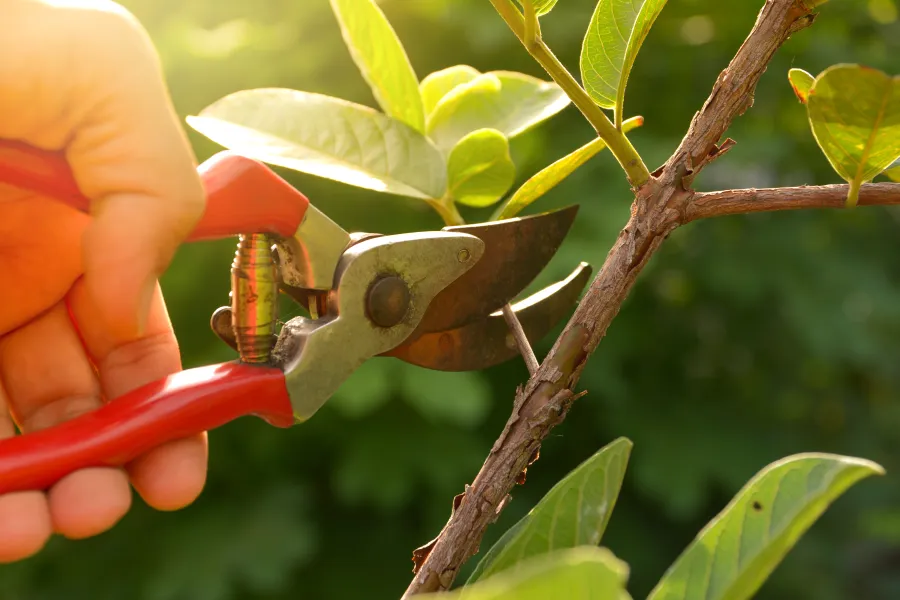
Cold Weather Tips
When there are freezing temperatures, prolonged cold weather or frost once spring growth has emerged; some of your plants may need some extra protection. Here are some cold weather tips to keep your garden warm and healthy. Have questions? We're here for you!
How to Protect Plants Against a Hard Freeze
- Cover: Place sheets of frost cloth over the plants prior to sunset before the freeze to help trap in the warmth from the soil and protect them from the wind. Ideally, the frost cloth should not touch the foliage as you are trying to create a pocket of warmer air around the plant. Be sure to secure the frost cloth with tent stakes, rocks, or bricks so the wind doesn't blow it away. Keep the plants covered until the temperate rises above 32 degrees. Sheets of fabric like bed sheets or drop cloths can be substituted for frost cloth if needed. Do not use plastic as it can damage foliage when temperatures drop. Smaller items or individual plants can be covered with large buckets as long as the plastic does not touch the plant. Paper grocery bags can work as well as long as rain is not in the forecast.
- Move your potted plants & hanging baskets indoors or to a protected area like a garage or shed. Move back outside when temperatures are above 32 degrees.
- Mulch: Mulching your garden insulates the plants' roots and retains soil moisture, which helps regulate ground temperatures during a freeze. Your garden should have a 2-3 inch layer of mulch.

Which Plants Need Protection?

Newly planted spring annuals such as calibrachoa, geraniums, snapdragons, and more need to be brought inside if in containers or hanging baskets. Annuals planted in garden beds will need to be covered with a frost cloth. Small buckets or boxes can also be used for smaller plants.

Perennials
Established perennials may be burned by the frost, but not killed without protection. Newly planted perennials should be protected like annuals - bring them inside if in containers or covered with a frost cloth if in the landscape.

Trees & Shrubs
Established trees and shrubs will weather the frost just fine, but blooms, buds, and new growth may be damaged if not protected and will need to be cut back to let the plant recover. Some flowering trees
may be too large to cover; focus on covering newly planted and smaller trees
and shrubs.

Tropicals
All tropicals should be treated like houseplants during the cooler season. Keep them inside until we are past the last frost date.

Tender Sprouts
Newly sprouts bulbs or perennials that have sprouted like daffodils and hyacinths will need to be brought inside or covered with white plastic.
How to Protect Plants Against a Frost
- Water In: Moist soil can hold more heat than dry soil, conducting heat faster to the soil surface, and keeping the air above the soil around the plants warmer. So water your garden well before a frost.
Cover plants with a frost cloth prior to sunset before the frost to help trap the warmth from the soil and protect plants from wind. Ideally, the cloth should not touch the foliage. Secure the cloth with stakes, rocks, or bricks it doesn't blow away. For small sprouted plants, overturned empty buckets, boxes, or planting containers will suffice for coverage. Uncover your plants in the morning after the frost.
Mulch: Mulching your garden insulates the plants' roots and retains soil moisture, which helps regulate ground temperatures during a freeze. Your garden should have a 2-3 inch layer of mulch.
Move your potted plants & hanging baskets indoors or to a protected area like a garage or shed.
- Wash: Any plants that you can't cover to protect from frost can be washed at sunrise AFTER the temperatures rise above 32 degrees. This will help minimize frost damage by melting the ice as quickly as possible.

Which Plants Tolerate Our Climate?
The easiest way to know what grows best in our region is to know your hardiness zone according to the USDA Plant Hardiness Map (7b and 8a in the Atlanta and Charlotte areas). Then check the plant's information tag when purchasing. Plants that thrive in the northern hardiness zones can weather a freeze/frost more easily. If you've planted spring and summer plants that usually thrive better in more southern zones, then those will be the ones that need protection more than others during a freeze (mostly annuals).
Assessing Cold Damage
- Be patient: You can't tell the extent of the cold damage until a plant starts actively leafing out/growing in spring.
- Be on the lookout: Watch for signs of new growth throughout the plant. Depending on the plant, you may not see leafing out until April.
- Try the Scratch Test: Another way to see if a plant will spring back to life is to lightly scratch the bark and look for fresh, lighter-colored wood. If you scratch the branch and the color is the same without any sap, then it is likely dead from the damage.
Treating Cold Damaged Plants
- Fertilize: Once a plant starts leafing out, start a fertilizing program with an all-purpose fertilizer to improve root health.
- Prune: If you had branches that broke during the icy weather, prune them so they have a clean-cut to heal properly.


